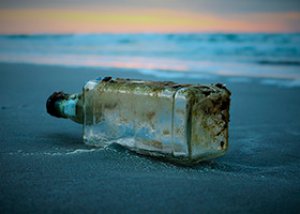
All iLive content is medically reviewed or fact checked to ensure as much factual accuracy as possible.
We have strict sourcing guidelines and only link to reputable media sites, academic research institutions and, whenever possible, medically peer reviewed studies. Note that the numbers in parentheses ([1], [2], etc.) are clickable links to these studies.
If you feel that any of our content is inaccurate, out-of-date, or otherwise questionable, please select it and press Ctrl + Enter.
The garbage patch in the Pacific Ocean is growing faster than scientists predicted
Last reviewed: 02.07.2025
 ">
">Numerous ocean currents have helped to collect a huge amount of drifting plastic in one place. The eerie sight can be seen in the northern zone of the Pacific surface waters. The giant accumulation was called the Great Pacific Garbage Patch. The latest study related to the patch has unpleasantly surprised scientists: the area of the "garbage dump" has really reached gigantic proportions - more than 1.6 million square kilometers. For clarity, note that, for example, France occupies an area of almost 644 thousand square kilometers.
The size of this almost continent remained unclear for a long time. Experts made various assumptions, according to which the area of the "garbage dump" was estimated at no more than 1.5 million square kilometers. Sadly, after measurements, the figure turned out to be more impressive, even taking into account the most pessimistic calculations. To take measurements of the giant dump, scientists used special nets that caught elements of the accumulations. A comprehensive photographic survey of the "object" was also used. The problematic area was studied by specialists from the Ocean Cleanup Foundation. Based on the results of the measurements, the true size of the "dump" was determined.
The area of the Great Pacific Garbage Patch currently covers 1.6 million square kilometers. This territory could accommodate several countries such as Germany, Spain, and France. According to research, this accumulation contains more than 80 thousand tons of plastic waste - 1.8 trillion plastic particles. Most of the spot - about 94% - is microplastic, that is, a substance whose particles do not exceed 5 mm in diameter.
The garbage accumulation on the Pacific water surfaces was "collected" over several decades. Examining and analyzing the elements that make up the spot, specialists identified plastic containers, bottles, boxes, parts of packaging, polyethylene, lids, and fishing nets. Some samples were about 40 years old at the time of analysis. Plastic debris that ended up in the ocean waters as a result of the famous Japanese tsunami that occurred in 2011 was also found in fairly large quantities. The share of such plastic in the total pile of garbage is approximately 15%. These results were made public by Laurent Lebreton, who published the corresponding material in Scientific Reports.
The plastic cloud is not just a lack of order in nature. Waste gets into the digestive organs of birds and animals, and causes intoxication in fish.
Plastic contains toxic substances and is also capable of absorbing various organic components that have a detrimental effect on living beings. This harm is especially common in animals' reproductive functions.
A little earlier, specialists had already managed to prove that even deep-sea fish are not protected from the damaging effects of microplastic particles present in surface water layers.
Information is presented on the page https://www.nature.com/articles/s41598-018-22939-w

 [
[